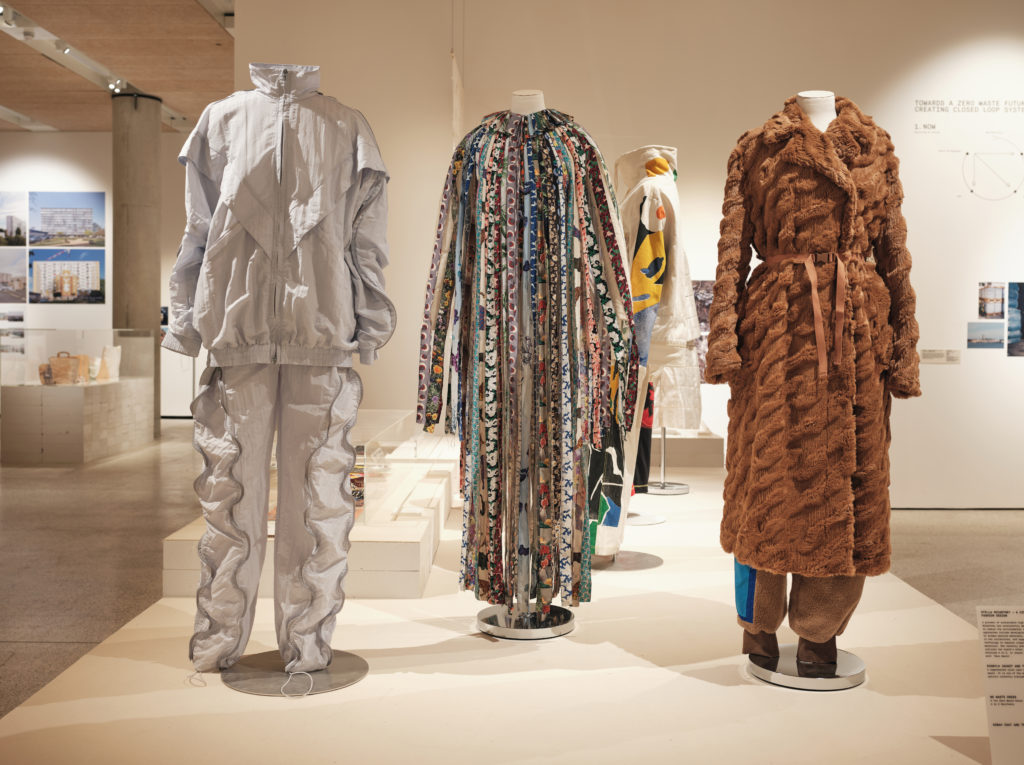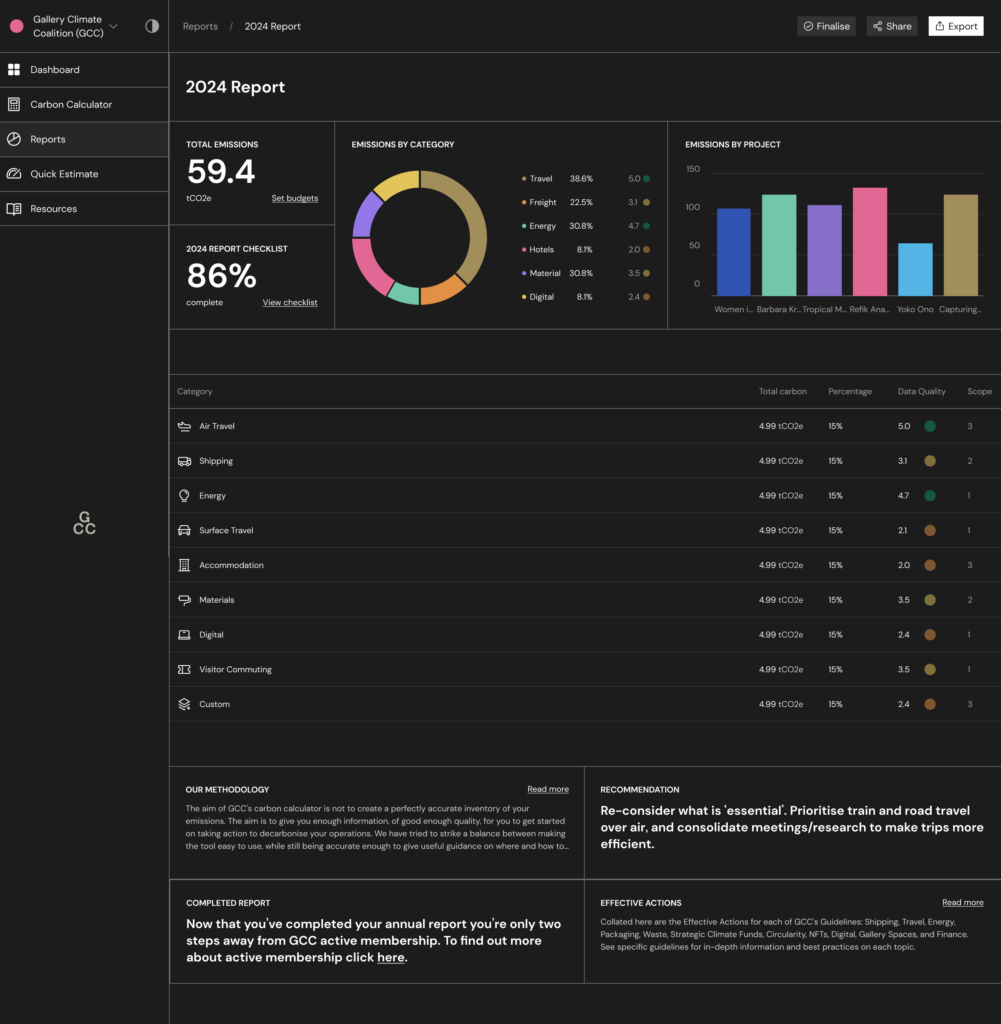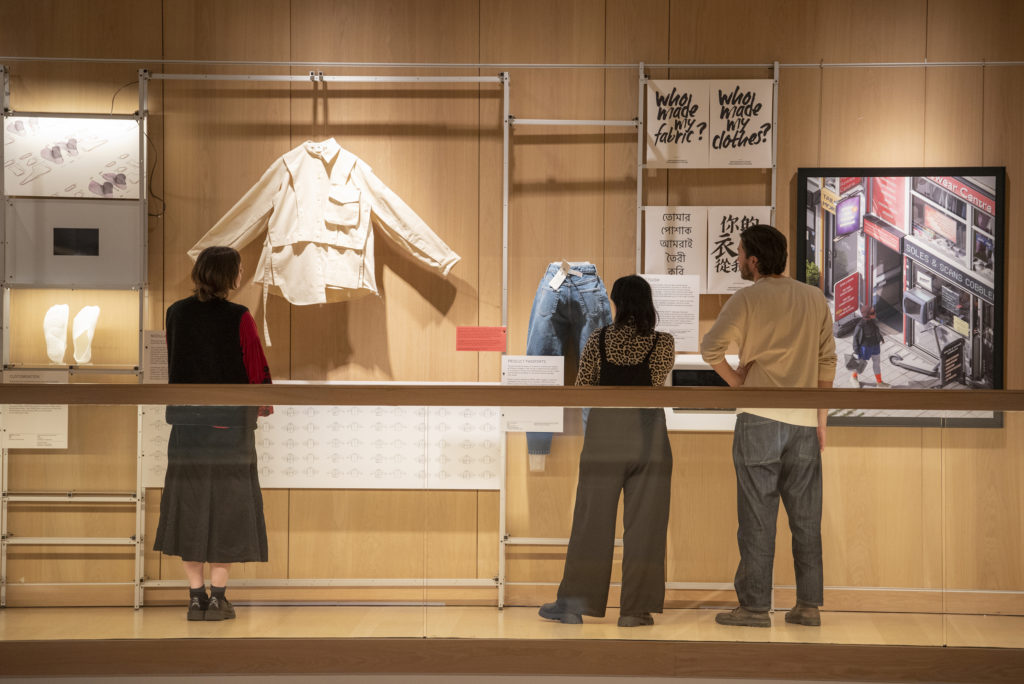
Elise Foster Vander Elst
Head of Exhibitions and Environmental Impact Lead, the Design Museum, UK
Museums have no borders,
they have a network
January 31, 2025
Key words: Environmental Responsibility, Sustainability, Collective action, community
A 2021 Ipsos MORI poll in the UK showed that respondents rated museum curators as more trusted than the Police, judges and the clergy, demonstrating that museums are uniquely placed to help our audiences understand their own agency and power. This has never been more urgent as global anxiety rises in the face of climate collapse. So, what is holding museums back from being more active in this space? Perhaps we’re afraid of ‘getting it wrong’. Maybe our house isn’t as ‘in order’ as we’d like from an environmental perspective. When you consider that the 2023 Act Green Benchmark report showed that 91% of visitors expect organisations to ensure materials are reused after an event or exhibition, it’s not surprising that we are embarrassed to admit that we still hire skips to take away large volumes of waste. Perhaps, as historians, curators, anthropologists, scientists and researchers, often detail-driven people and perfectionists, we’re paralysed by fear of seeming hypocritical if we do try and change things and we fall short.
But another future is possible, if we all commit to building it together. The question is: where do we start to move from individual to collective action? When we share tools, case studies and resources, we can accelerate learnings and forge a new understanding of what best practice looks like. At the Design Museum in London, we have been working since 2020 to change the way we develop exhibitions and advocate for design’s role in the green transition. Wherever you are on your journey to become a more environmentally resilient museum, these nine actions for change should help you progress.
Action 1: Use your programme
A major exhibition or project can bring colleagues together across an institution. Our temporary exhibition, Waste Age: What Can Design Do? in 2021 was a transformational experience for the Design Museum. As the curatorial team’s narrative explored design’s role in our ‘take, make, waste’ economy, our design and production teams were encouraged to explore new materials for the exhibition furniture. The learning team produced workshops for families and developed courses around decarbonising businesses in partnership with the local authority. Meanwhile, the retail team created a new set of criteria when selecting items for sale in our shops and the events team began to explore how to reduce the environmental impact of their activities. These initiatives endured and catalysed new approaches. Internally, we now call this the ‘Waste Age effect’.

Action 2: Develop your data
In 2021, we built a carbon calculator to learn more about the CO2e emissions impact of our decisions when producing an exhibition. By using this calculator, we gained a greater understanding of what made an exhibition carbon heavy. Numbers made the impact of decisions tangible and gave the production team confidence throughout the research phase and when communicating to contractors.
In October 2024, we retired our tool and have been working with the Gallery Climate Coalition to support the development and roll out of an improved, free carbon calculator they have developed. Designed for museums and galleries, it is user-friendly and produces helpful graphs. These can be used to communicate data findings and understand which areas have the greatest impact.

Action 3: Train your staff
Sessions on how to use specific tools, alongside broader programmes such as Carbon Literacy Training for Museums are essential to help staff as they explore the agency they have in their roles. Many institutions do not have an in-house sustainability specialist. However, in 2024, ‘every job is a climate job’. Leadership teams must create a culture where ‘green teams’ are empowered, environmental efforts are celebrated and forward job plans support responsible practices. The planet and future generations need to be acknowledged as key stakeholders in our work.
Action 4: Be clear, be ambitious
Set ambitious goals for collaboration. Ensure environmental responsibility is a priority in your design briefs, tender packs and interview questions. Whether you’re working with artists, designers, builders or shipping agents, ask the challenging questions around reuse, energy, and waste. As their clients and partners, the more we insist that collaborators take this seriously, the more motivated they will become to find more sustainable solutions. Example questions for contractors can be found in the Design Museum’s Exhibition Design for our Time guide.

Action 5: Know what you don’t know
Ideas don’t always work out. Find specialists or sector colleagues who can help. When exploring reuse for example, it is helpful to work with a construction expert during the design development phase to ensure your plans will be realisable.
Action 6: Embrace existing tools
There are many resources available to help you make informed decisions. From the Sustainable Development Goals, the ICCROM OCM toolkit, to more region-specific tools (including the Rethinking Touring Exhibitions tool developed by the Design Museum, Art Fund and The Exhibitions Group). Build on work already completed by sector colleagues. Rather than reinvent the wheel, focus precious energies on filling the gaps.
Action 7: Find allies
Research suggests that for a group of people to embrace change, only 25% of that group need to be aligned. 25% is the tipping point. If you’re finding it difficult to persuade everyone in your department or organisation, don’t despair, you don’t have to. Start with areas in your direct influence and work from there. You might find other colleagues are already working in this area and you can learn from each other. Find a network or membership organisation such as the Gallery Climate Coalition and join the movement.

Action 8: Make a Plan
Seemingly simple but so crucial. Set a direction of travel and review progress regularly.
Action 9: Breathe, it’s a marathon not a sprint
We know we’re running out of time to meet our global climate goals (a reduction of greenhouse gas emissions by a minimum of 50% by 2030). We know the situation is urgent and more is action is required across society. And we know it’ll take time. To keep sustained focus on this work, build a community to support you, and look after yourself as you learn.
Resources to go further
